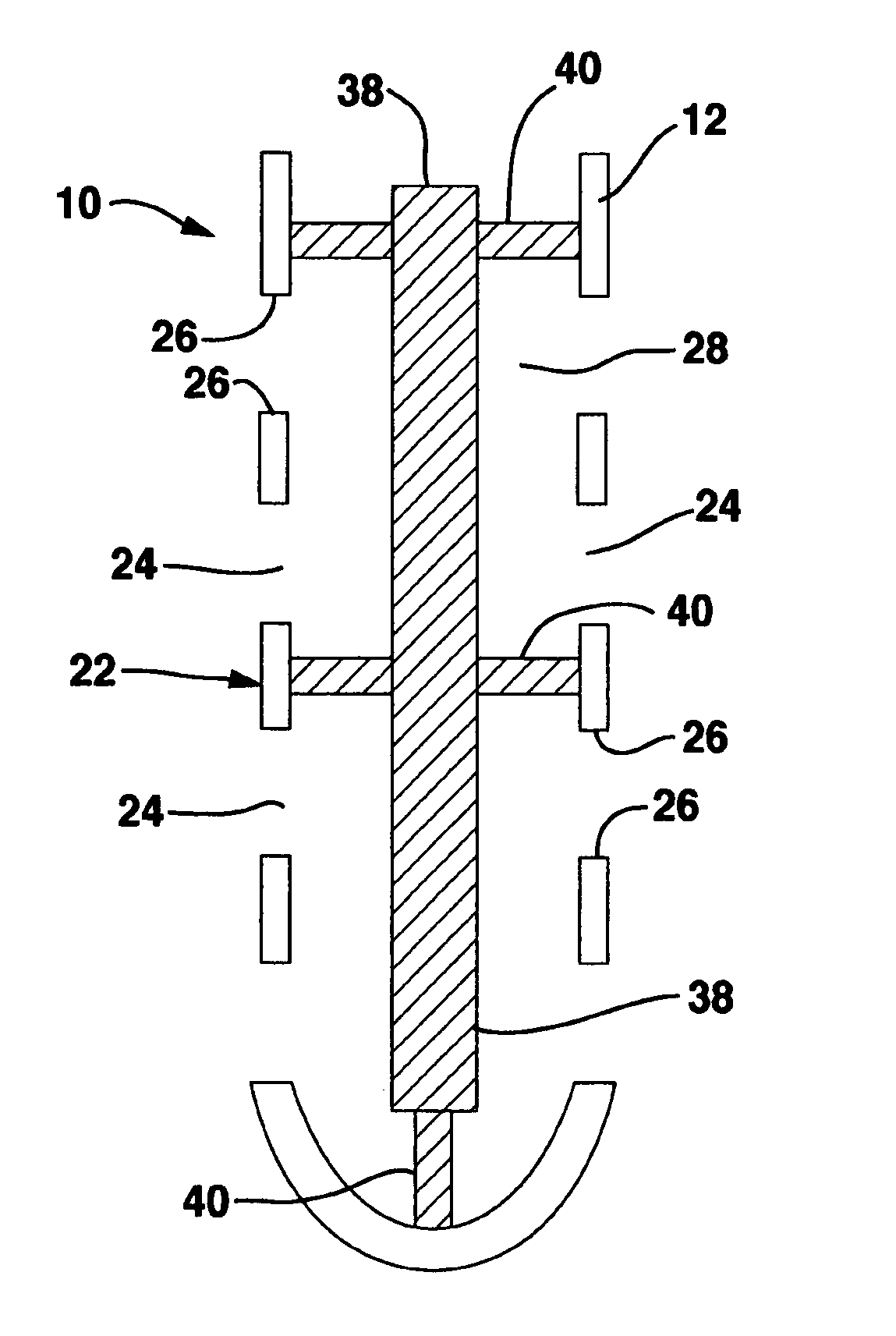Occlusion resistant hydrocephalic shunt
a hydrocephalic shunt and occlusion technology, applied in the direction of blood vessels, prostheses, catheters, etc., can solve the problems of occlusion of the catheter lumen, and occlusion of the effective drainage of the csf fluid, so as to achieve the effect of optimizing the resistan
- Summary
- Abstract
- Description
- Claims
- Application Information
AI Technical Summary
Benefits of technology
Problems solved by technology
Method used
Image
Examples
example 1
Drug Loaded Using an Impregnation Approach
[0058]Standard shunt ventricular catheter silicone tubing (translucent, OD=0.083″, ID=0.048″), made of platinum cured silicone rubber (Silastic MDX4-4210, Medical grade), was inserted into glass beakers containing solutions of Dexamethasone-acetate (DEX-Ac) in mixture, as specified in Table 1.
[0059]
TABLE 1DEX-Ac loading of 20 mg weight pieces of shuntswere made by placing each in 1 g of the solution,composition of which is given in this table.Samplewt % DEX-ACXylene:Acetone20.869:1 wt / wt36.451:3 wt / wt44.31:1 wt / wt
[0060]Samples were incubated at 40° C. for 18.5 h, following by rinsing with Xylene and drying in a vacuum oven for 28 h. Samples were positioned in glass vials with a fixed amount of PBS buffer. Release test was done at 37° C. in a 0.01 M PBS buffer containing 0.138M NaCl and 0.0027M KC1 using an incubator shaker (model C24 from New Brunswick Scientific Inc.), which was set up at 100 RPM. Drug release amount was estimated by UV-VIS...
example 2
Drug loading using a Dip-coating Approach
[0062]RTV Silicone glue (MED 1137, Nusil), and Dexamethasone free base (DEX-Fb, UpJohn S7185) free base were dissolved in tetrahydrofuran (THF) to achieve final concentrations of solids which were measured in PBS buffer. A distal part of the silicone catheter was dipped into this solution using a withdrawal speed of either 1.0 cm / s or 0.2 cm / s, different drying periods, differing numbers of dipping, and with different release profiles. After solvent evaporation and silicone curing, samples were analyzed for dexamethasone release. Release profiles are shown in FIG. 15, with profiles illustrating DEX-Fb release in micrograms / sample over days. Profiles 201, 202, 203, 204, 205, 206, 207, 208, and 209 represent total percent of solids in THF (percent of DEX in solids)—number of dip coatings. For example, Profile 203 is 11(24)-4d, and this represents a sample which was dip coated four times with a THF solution containing 11 weight percent of solids...
example 3
Barrier Coating Slows Down the Drug Release.
[0063]Samples, coated as described in the above Example 2 were additionally dipped into pure RTV silicone solution in THF (11 wt %) to form a barrier layer. These additional coatings resulted in a four fold decrease of an initial burst of the released dexamethasone.
PUM
| Property | Measurement | Unit |
|---|---|---|
| Electrical resistance | aaaaa | aaaaa |
Abstract
Description
Claims
Application Information
 Login to View More
Login to View More - R&D
- Intellectual Property
- Life Sciences
- Materials
- Tech Scout
- Unparalleled Data Quality
- Higher Quality Content
- 60% Fewer Hallucinations
Browse by: Latest US Patents, China's latest patents, Technical Efficacy Thesaurus, Application Domain, Technology Topic, Popular Technical Reports.
© 2025 PatSnap. All rights reserved.Legal|Privacy policy|Modern Slavery Act Transparency Statement|Sitemap|About US| Contact US: help@patsnap.com



